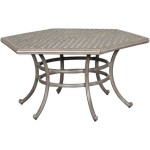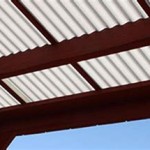DIY Concrete Patio Overlay: A Comprehensive Guide
Upgrading your concrete patio can be a rewarding project that adds value to your home and creates a more enjoyable outdoor living space. A concrete patio overlay is an excellent option for resurfacing and transforming your existing concrete patio, providing a fresh and updated look. Here's a comprehensive guide to help you navigate the DIY concrete patio overlay process:
1. Preparation: The Foundation of Success
Proper preparation is key to a successful concrete patio overlay. Start by thoroughly cleaning the existing concrete surface, removing any dirt, mildew, or other debris. Use a pressure washer or a strong cleaner to ensure the surface is clean and free of contaminants. Next, repair any existing cracks or damage to the concrete using a concrete repair kit. This will create a smooth and stable base for the overlay.
2. Applying the Overlay: A Step-by-Step Guide
Once the concrete surface is prepared, it's time to apply the overlay. The overlay material can be purchased from home improvement stores and comes in various colors and textures. Follow the manufacturer's instructions carefully for mixing and applying the overlay. Generally, the process involves troweling a thin layer (usually 1/4 inch to 1/2 inch) of the overlay mixture onto the existing concrete, smoothing it out, and working it into any cracks or voids.
3. Curing: Patience is a Virtue
After applying the overlay, it's crucial to allow it to cure properly. Curing involves keeping the overlay moist for a specific period to allow the chemical reactions necessary for strength development to take place. The curing time can vary depending on the overlay material and the weather conditions, but it typically ranges from 3 to 7 days. During this period, keep the overlay moist by misting it with water or covering it with plastic sheeting.
4. Finishing Touches: Enhancing the Look
Once the overlay has cured, you can add finishing touches to enhance its appearance and durability. Consider adding a decorative sealer to protect the overlay from stains and wear. Sealers come in a variety of finishes, such as matte, semi-gloss, or high-gloss, allowing you to customize the look of your patio. Additionally, you can apply a non-slip additive to the sealer to improve safety, especially in areas prone to moisture.
5. Maintenance: Preserving Your Patio
To maintain the beauty and longevity of your concrete patio overlay, regular cleaning and maintenance are essential. Clean the surface periodically with a mild cleaner and a soft-bristled brush to remove dirt and grime. Avoid using harsh chemicals or abrasive cleaners, as they can damage the overlay. Additionally, inspect the overlay regularly for any cracks or damage and repair them promptly to prevent further deterioration.
Conclusion
A DIY concrete patio overlay is a practical and affordable way to upgrade your outdoor living space. By following these steps and adhering to proper techniques, you can create a durable and aesthetically pleasing patio that will provide years of enjoyment. Remember, preparation is key, applying the overlay carefully, allowing for proper curing, adding finishing touches, and maintaining the patio will ensure a successful project.

Diy Stamped Concrete Patio How To Stamp By Budget101 Com

Gorgeous Diy Stamped Concrete Tile Driveway For Less Much Do It Yourself Fun Ideas

Resurfacing A Concrete Patio For Budget Diy Makeover Fab Everyday

Diy Stamped Concrete Tile Tutorial Do It Yourself Fun Ideas

3 Concrete Resurfacing Options For Patio

How To Create Faux Tile Look On Concrete Patio Southern Hospitality

Amazing Concrete Patio Transformation Make Faux Wood Planks Over With Overlay Leggari S

Diy Stamped Concrete Wood Design

Stamped Concrete Overlays Easier To Install Less Costly Than Conventional Way Decor

How To Create Faux Tile Look On Concrete Patio Southern Hospitality








